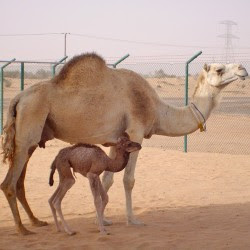 Cenderawasih bird or a stranger called with the name of Bird of Paradise, is a typical bird of Papua, Indonesia. 43 of this beautiful bird species, 35 of which can be found in Papua. The rest, it is hard to find.
Cenderawasih bird or a stranger called with the name of Bird of Paradise, is a typical bird of Papua, Indonesia. 43 of this beautiful bird species, 35 of which can be found in Papua. The rest, it is hard to find.
Its beautiful fur, mainly found in the male Cendrawasih. Generally, wool is very bright with a combination of black, reddish-brown, orange, yellow, white, blue, green, and purple. Cendrawasih species that are popular Paradisaea apoda, Paradisaea minor, Cicinnurus regius, and Seleucidis melanoleuca.
 Birds usually live in dense forests or in low. He has a habit to play in the morning when the sun began to light appeared in the eastern horizon.
Birds usually live in dense forests or in low. He has a habit to play in the morning when the sun began to light appeared in the eastern horizon.
Cendrawasih male wearing fur neck to apprehend the kind of interesting opponents. Cendrawasih very masculine dance spectacular. While singing at the top of the limb, this male wiggle to different directions. Sometimes even reversed depending on the limb. However, each species of course have a distinctive type of dance.
In Papua, animals, animals in this region have a unique. Cendrawasih bird is one of the few birds that ilmiahnya name means "heaven", "magnificent", "beautiful", and "very good".
 Robby Sawaki, one of the traditional artists of Papua, calling birds as Cenderawasih legged woman is not or Apoda. In Latin Cendrawasih bird described as paradisaea apoda. Birds are very beautiful but does not have the legs to be not from earth, because they walk or sit in a tree.
Robby Sawaki, one of the traditional artists of Papua, calling birds as Cenderawasih legged woman is not or Apoda. In Latin Cendrawasih bird described as paradisaea apoda. Birds are very beautiful but does not have the legs to be not from earth, because they walk or sit in a tree.
Cendrawasih thirty species are found in Indonesia, 28 of which are found in Papua is home to Cendrawasih paradigalla carunculata, Cendrawasih long tails astrapia nigra, Cendrawasih paratia parotia sefilata, Cendrawasih cicinnurus respublica Wilson, and red Cendrawasih paradiasea rubra.
A son of the Papua-day work as a tour guide, Helmut Kmur, say, in every occasion when he was traveling in the Land of Papua, many see it and witness with their own eyes the animals from Papua and in the catch in the sale. "One of them is bird paradise, which I often see birds on the market outside the area of Papua, "said Helmut.
Helmut, also deplore the original Papua hunt and kill a protected animal. "I take an example, people want to create an event must be present Cenderawasih bird as a sign," he said.
 Birds get the nickname the bird paradise, the first population quite a lot in the forest of Papua, but continue to be hunted because of the drastic population decline and now is difficult to find. The causes, among others, forest where they seek refuge and breed narrow start line with the increasing logging.
Birds get the nickname the bird paradise, the first population quite a lot in the forest of Papua, but continue to be hunted because of the drastic population decline and now is difficult to find. The causes, among others, forest where they seek refuge and breed narrow start line with the increasing logging.
Andreas Lameki, Head of Forestry Biak Numfor said, Cendrawasih bird hunting is prohibited based on the actual letter of the decision the Ministry of Forestry, but because the price in the market arouse enough, so that hunters continue to hunt wild.
While Cendrawasih king, Cendrawasih bald, red Cendrawasih, toowa, and Cendrawasih small yellow tails, have been included in the list of types of protected animals under the Law No 5 Year 1990 and PP RI No. 7 of 1999.
In many bird market in Jakarta a few years ago, a bird Cendrawasih sold illegally with the price Rp.1-2 million per head. Meanwhile, the collectors are also buying the bird of Paradise that has been preserved with the price of Rp750 to Rp1 million thousand.
 although in some societies are still considered taboo. If you want to adopt animals from species of reptiles, there are several things to consider, among others:
although in some societies are still considered taboo. If you want to adopt animals from species of reptiles, there are several things to consider, among others: * Prepare the first cage and all the necessities pet before you bring it home, so the pet will make it easier to adapt to her new place.
* Prepare the first cage and all the necessities pet before you bring it home, so the pet will make it easier to adapt to her new place.

















































